Introduction to Sedum Yellowing
The charm of sedum plants, with their fleshy leaves and star-shaped blooms, has captivated gardeners and indoor plant enthusiasts alike. However, even these hardy succulents can send out a cry for help, most notably by turning a worrisome shade of yellow. Why is this happening to your beloved sedum? Strap in for a botanic investigation!
Let’s think of sedums as the laid-back friends in your garden or living room—usually opting for a carefree existence, they bask in sunlight and minimal water. But even the most chill plants have their limits. Knowing when to trim them and provide the right care can be pivotal to ensuring full, vital growth. When your sedum starts to turn yellow, it’s as if it’s holding up a sign saying, “Hey, something isn’t quite right here!”
Visions of lush green turning to pale yellow can surely dampen the spirits of any green thumb, but fear not! We’re about to untangle the web of potential causes and set you on the path of re-greening your plant with ease. The journey from yellow back to green is a detective’s game that we’re going to solve together.
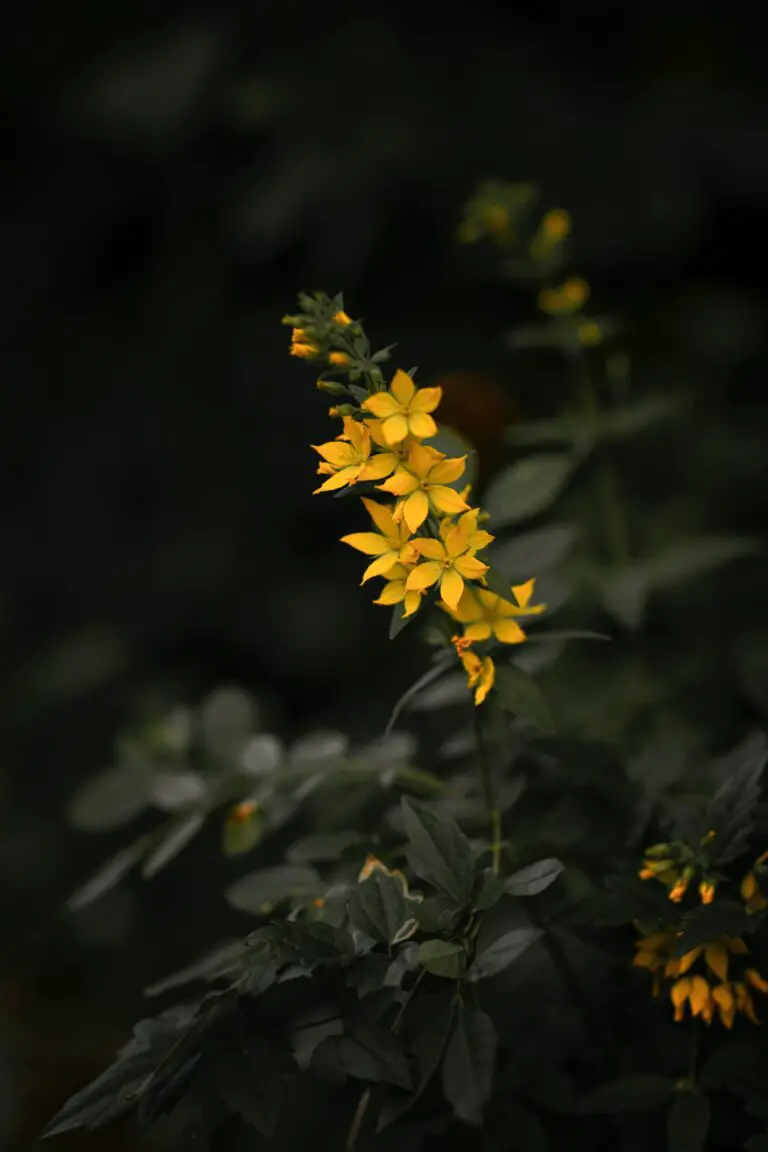
Imagine your sedum as a performer that’s suddenly forgotten its lines—the show can’t go on without a little assistance from the wings. By examining the common culprits behind the yellowing of sedums, we’re essentially nudging them back into the spotlight. So, keep your garden gloves ready, and let’s dive deep into the world of these quirky plants and their colorful cries for help.
Understanding Sedum Plants
Let’s dive into the world of sedums, shall we? Picture this: a vast sea of fleshy leaves spread across rock gardens, roofs, and everywhere in between. That’s right, we’re talking about those hardy, resilient succulents known as sedum plants. You might have seen them blanketing the ground with their cheerful hues or spicing up a succulent arrangement. Oh, and talk about variety – they come in a bevy of shapes, sizes, and colors, ready to suit your every garden fantasy!
With sedums, it’s like Halloween all year round. Why? Because they are the masters of disguise, coming in more than 400 species! From the creeping wonders that hug your garden bed to the stately Sedum spectabile, there’s a sedum out there waiting to make your acquaintance. Just when you think they can’t surprise you anymore, you find them showing off with blooms that set butterflies aflutter and add a dash of painter’s palette perfection to your outdoor space.
But what makes sedum plants truly unique isn’t just their looks – it’s their character. They’re the survivalists of the plant kingdom, store water like nobody’s business, and laugh in the face of drought. Sedums are practically the camels of the plant world, and they’re not fussy about where they put down roots. They thrive in those spots where other plants might throw in the trowel, like shallow soil and scorching sun. It’s like they have a superpower!
Sure, they may look as chill as a cat lounging in a sunbeam, but don’t let that fool you. When it comes to survival, sedums are as tough as nails. They roll with the punches, whether it’s frigid temperature dips or summer sizzlers. Need some tips on how these succulents stay in tip-top shape? Check out our guide to creating lush gardens with sedum and get the lowdown on maximizing their potential.
Now that you’ve got the scoop on what makes sedum plants fascinating, let’s take a peek at them in action. Grab your gardening gloves, and let’s watch these wonders in their element!
Common Causes of Yellowing in Sedum
Is your sedum’s vibrant green turning a sickly yellow? You’re not alone! Gardeners all over face this perplexing issue, but don’t worry—we’re here to peel back the layers and uncover what’s going on with your succulent friend. Let’s dive into the common culprits behind your sedum’s yellow dilemma.
Too Much Water: A Soggy Situation
First up, over-watering. While sedums are easy-going, they do have their limits. Picture this: It’s been raining cats and dogs for days, and there’s poor Mr. Sedum, with his feet stuck in a puddle of water with no escape. Or maybe you’ve been a tad overzealous with the watering can. Either way, a sedum doesn’t need to dive in the deep end! Overwatering can suffocate its roots, leading to yellowing leaves. A key to sedum care is to let the soil dry out between drinks. Just like us, they need a breather!
Soil Sorrows: An Unsuitable Home
Next, check the soil conditions. Sedum thrives in well-draining soil—think of a gritty mix that’s loose and airy. But if you’ve planted your sedum in dense, clay soil, it might as well be wearing concrete shoes. That kind of soil retains moisture like a sponge, leaving your sedum begging for more oxygen. It’s time for a soil intervention!
If you’re looking for more details on the do’s and don’ts of sedum care, visiting The Garden Glove can broaden your gardening horizons.
Lighting Lapses: A Balancing Act
Then there’s the lighting. Sedums love the limelight—or should we say sunlight? They bask in the glory of the golden rays, but if your plant’s in too much shade, it could cause the leaves to yellow. It’s like having an all-access pass to a rock concert but sitting in the nosebleed section. Let’s move that sedum into the sun and let it enjoy the show, shall we?
But wait, it’s not just about moving your plant into the scorching sun. It’s about balance. Too much direct sunlight, especially during a heatwave, can have your sedum sending out an SOS. The leaves can scorch, turning yellow as if saying, “Turn down the heat, will ya?”
Stress Factors: The Strain Game
Finally, let’s talk about other stress factors. Your sedum might be dealing with pests that are feasting on its leaves or perhaps it’s in the middle of a turf war with invasive plants trying to hog all the resources. Combat these challenges head-on—be the plant hero your sedum deserves!
Remember, sedums are tough cookies, but even the toughest have their breaking point. Now, let’s roll up our sleeves and get to the root of your sedum’s troubles. And hey, don’t just take my word for it; take a gander at this great video that provides a virtual toolkit for keeping your succulents happy and healthy.
Tackling these issues can be the difference between a thriving sedum and one that’s sending out mayday signals. By understanding and addressing these factors, your sedum will be back to its perky, green self in no time! So, let’s keep our green thumbs attentive because our plant pals depend on us.
The Overwatering Issue and Its Signs
It’s a common sight in gardens and homes alike: A once perky sedum plant beginning to sulk with yellow, wilted leaves. If you’re scratching your head wondering, “why is my sedum turning yellow,” it’s time to consider the watering can as a culprit. Overwatering is often the mastermind behind your sedum’s lament, ushering in a suite of symptoms that scream excess hydration.
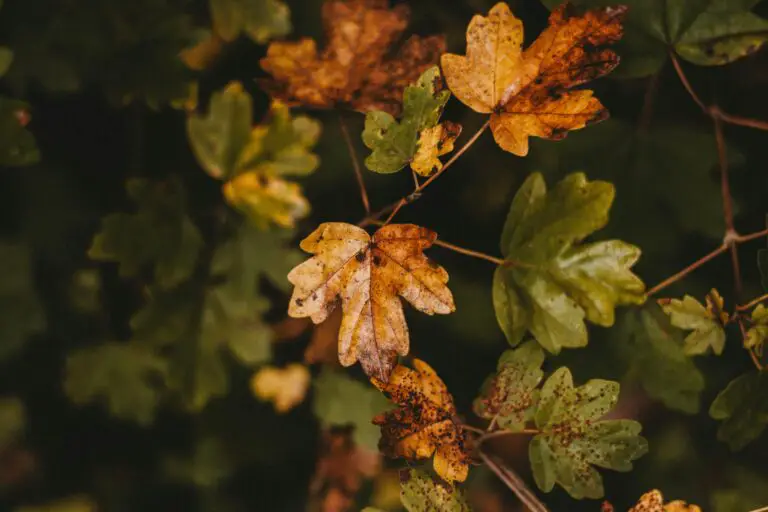
Imagine giving your plant a drink, hoping to quench its thirst, only to find that you’ve drowned its roots instead. The scenario is more common than you’d think. Overwatered sedum plants throw up a red flag with leaves that feel as if they’ve taken a long, soggy bath – soft to the touch and droopy as a limp noodle. This is no mere cosmetic issue. It’s a warning sign of potentially fatal root rot and a distressed cry for drier days ahead.
In a bid to help our leafy friends, we often water generously, but this is where gardeners can unwittingly turn caretaker to executioner. A sedum doesn’t need a deluge, it craves moderation. These resilient plants are built to withstand droughts, their succulent leaves hoarding water for parched times. So when we drench them in excess water, it’s akin to hosting a feast and forcing the guests to eat until they’re ill.
For those who tend to love their plants a little too much with the watering can, take heart in knowing there’s a way back to health. Dialing back on your watering schedule can be revelatory, allowing your sedum to thrive rather than just survive. Interested in avoiding a watering mishap? Delve into strategic watering tips that promise vibrance rather than yellow despair.
Don’t let your green thumb be tarnished by overzealous watering. Learn to read the signs, dial back on the H2O, and watch your sedum rebound from yellow back to the lush green of health and vitality. Your plants will thank you, with every vibrant, non-yellow leaf they sprout.
Nutrient Deficiencies That Lead to Yellowing
Like a gourmet chef who knows just the right amount of spices to add to a dish, your sedum needs a perfect blend of nutrients to maintain its lush, green appearance. When your sedum’s leaves start flirting with yellow, it’s waving a flag that signals a nutritional SOS! The most common culprits? Nitrogen, phosphorus, and potassium—the big three of the nutrient world—along with a supporting cast of magnesium and iron.
The Nitrogen Necessity
Imagine running a mile with your nostrils pinched tight. That’s how your sedum feels when it’s low on nitrogen. This essential element is like breath to your plant, fueling its growth and deep green color. When nitrogen plays hooky, chlorophyll—the pigment responsible for photosynthesis and that vibrant color—goes on strike, leaving your sedum’s leaves pale and yellow. But fear not, a nitrogen-rich fertilizer can resuscitate your wilting friend before the yellowing spreads!
Phosphorus: The Root of It All
Witness your sedum’s leaves turning a sickly shade of yellow accompanied by weak roots or stunted growth? Phosphorus deficiency might be the backstage villain. Known for its role in root development and plant maturity, without phosphorus, your sedum could become the plant equivalent of a floundering teen. A phosphorus boost, often through bone meal or rock phosphate supplements, could have it strutting back to its luscious self in no time.
Potassium, The Protector
“I shall protect you from the yellow peril!” That’s potassium, donning its superhero cape. A lack of potassium can mean your sedum’s defenses are down, making it vulnerable to diseases, drought, and frost. The result? Yellow leaves waving a flag of surrender. Inject some potassium into the soil, and watch your sedum suit up in its green armor once again.
Minor Magnesium & Iron
While nitrogen, phosphorus, and potassium grab the headlines, magnesium and iron play a crucial “behind-the-scenes” role. Low magnesium, often a problem in acidic soils, turns leaf edges yellow, a state reversible with a dollop of Epsom salt solution. An iron shortage, on the other hand, triggers a condition called chlorosis, where leaves yellow while veins stay green—think of it as the plant version of patchy sunburn. Iron supplements can help clear up this uneven complexion.
Meet Sarah, a fellow sedum enthusiast, whose plant turned a curious shade of yellow despite her diligent care. After a quick soil test unraveled a dramatic nitrogen deficiency narrative, she adopted a nitrogen-boosted feeding schedule. The transformation? Simply astonishing. Her sedum bounced back with such vim and vigor that it became the envy of her gardening club.
Now that we’ve troweled through the dirt and unearthed the nutrient deficiencies that can turn your sedum yellow, you might be wondering where to start. Here’s a video that dives into the heart of the matter, with tips and tricks to keep your plants at the peak of health:
Impact of Sunlight and Proper Sedum Placement
When the vibrant greens of your sedum start sliding into a yellow palette, it may be time to check your watch – the sunlight watch, that is! Just like humans can get a bit off-color when not soaking enough sunshine, your sedum also needs its daily dose of vitamin D to stay in top-notch shape. Let’s shed some light on this!
Now imagine, your sedum is like that sunbathing enthusiast at the beach, thriving under the perfect balance of light and warmth. But too much of a good thing, or too little, can have your once lush sedum looking more like a washed-out beach umbrella than the vibrant plant it’s meant to be. Inadequate sun exposure can weaken your sedum, making it more susceptible to yellowing leaves – a clear sign of distress.
Chasing the Sun: Optimizing Sedum Health
Here’s a real-life scenario: Picture two sedums, planted side by side. One is basking in the glory of the sun for just the right number of hours; its leaves are green and glossy. The other? It’s stuck in a shady spot, looking sallow and sad. It doesn’t take a plant psychologist to figure out that sedum number two is in a shadowy slump due to insufficient sunlight.
But don’t just take our word for it. Let’s dive into a real gardener’s journey through this sunlit maze. This video sheds valuable insight into container plants crafted for the full sun, giving you a visual guide through the wide array of sedum specifics when coping with the sizzling star above us.
To avoid the sad plight of yellowing leaves, your goal should be to emulate the successes of the sedum thriving in the sun. Ensuring that your succulent friends get a proper amount of sunshine goes a long way toward warding off any discoloring drama. Think of it as your plant’s very own solar-powered shield against the dreaded yellow hue.
Remember, whether you’re positioning potted petite sedums on your patio or planting them in your garden paradise, keeping an eye on their solar intake—just like you would with your daily water intake—is vital. With the right amount of sunlight kissing their leaves, your sedums will continue to glow with health rather than wither into a worrisome yellow.
Recognizing and Treating Common Diseases
Have you found yourself frowning at your sedum’s once lush greenery, now painting a sallow picture? Let’s face it; yellowing leaves can dash a gardener’s dreams of vibrant sedum displays. But don’t fret! Unearth the culprits behind the sickly hue and discover how to restore your plant’s vivacious vigor.
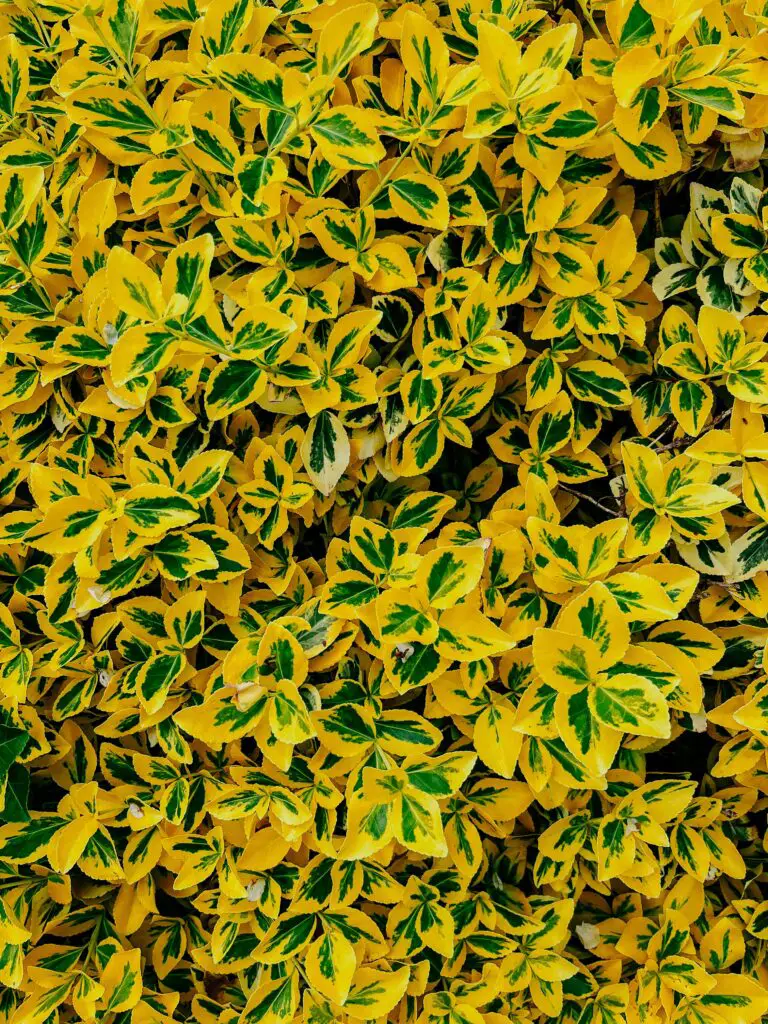
First things first, let’s play plant detective—examine your sedum for signs of infirmity. Is it the entire plant turning yellow, or are we talking about a solo act with just a few leaves taking the yellow brick road? Now, don’t just stand there; let’s delve into some of the not-so-sweet diseases that cause this disheartening discoloration.
Fusarium Wilt: The Stealthy Intruder
One villain in the plot could be Fusarium wilt. This crafty fungus waits for the perfect moment, when the plant is stressed or the weather is just right, to strike. Picture this: The base of your sedum suddenly dons a jaundiced look. Before you know it, the yellowing ascends, leaving a wake of wilted dreams. The remedy? Start by removing the affected parts with a surgeon’s precision; those leaves are beyond saving. Reckon it’s time to reassess your watering habits—Fusarium adores overly damp dwellings.
Root Rot: A Subterranean Saboteur
Now let’s dig a little deeper; quite literally, into the roots. Overflowing love, in the form of water, can drown your sedum’s roots. Enter root rot, a menace that thrives in soggy soil. If you find your sedum’s roots looking more brown than white and feeling mushy to the touch—Houston, we have a problem. Hit pause on watering and consider a well-draining soil mix. It might just be your lifeboat.
Engaging in a battle of wits with these common diseases can seem daunting. But with a keen eye and some plant savvy, you can transform your yellowing sedum back into the green goddess it’s meant to be. Embrace these tips, and watch your sedum bounce back, ready to perform in your garden’s show-stopping ensemble once again.
Preventative Measures and Best Care Practices
It’s often said that an ounce of prevention is worth a pound of cure, and this rings especially true when it comes to caring for sedum plants. To keep your sedum vibrant and green rather than yellow and wan, let’s dive into practical steps to prevent yellowing. Imagine your sedum as a sunbathing enthusiast; it craves the perfect balance of sunlight and hydration without overindulgence. Here’s how you can achieve just that.
Mastering the Art of Watering
Begin with the watering can. Sedums are like camels of the plant world—they store water in their fleshy leaves and don’t need constant sips. Overwatering is a common misstep that can lead your sedum down a yellow-brick road to poor health. To avoid overzealous watering, only quench your sedum’s thirst when the top inch of soil feels dry. Picture a sponge that’s slightly damp, not dripping wet—that’s the sweet spot for your sedum’s soil moisture.
Soil Selection: Your Plant’s Foundation
Now, let’s talk dirt. Good drainage is the penthouse suite must-have for your sedum; soggy soils can cause root rot, which often manifests as yellowing leaves. Choose a potting mix designed for succulents or create your own by blending regular potting soil with coarse sand or perlite. It’s like building a house on a hill rather than a floodplain; your sedum’s roots will thank you for the well-draining foundation.
The Sedum Care Regimen
Your sedum doesn’t ask for much—a sunny spot, a little water, and room to breathe. Give it a place in direct sunlight, or at most, partial shade. Think of your sedum like a sunbather lounging by the pool; too much shade, and it won’t get that golden tan (i.e., maintain its vibrant color). Trust that it will thrive with minimal fuss, much like a laid-back friend who’s easy to please.
Following these best care practices, your sedum shouldn’t have a reason to turn yellow with envy at the sight of other plants. Keep a watchful eye like a botanical guardian, and your green-thumb reputation will only grow. Just remember, every plant has a personality; learn what your sedum likes and dislikes, and you’ll both enjoy a long, colorful life together.
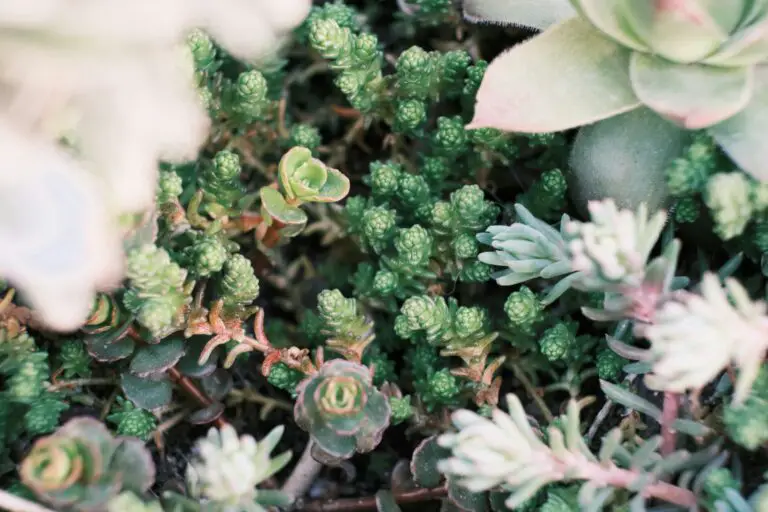
When to Seek Professional Help
Encountering a sedum that’s losing its lush green vibrancy can be a real head-scratcher for garden enthusiasts. The yellowing of sedum often points to an underlying issue that might escape even the savviest gardener’s eye. So, when should you raise the white flag and seek expert wisdom? Let’s dive into a few scenarios where professional guidance is the green thumb’s ally.
Imagine you’ve been nurturing your sedum with tender love and care, only to wake up to a sallow, yellow garden citizen. If you’ve ticked all the basic care boxes—right soil mix, agreed-upon watering schedule, and placement under the perfect sun-kissed spot—but your sedum’s leaves still mimic the colors of a lemon tart, it might be time for a nursery trip. Various garden ailments, from nutritional deficiencies to pesky pests, can masquerade as a simple case of the yellows, and these can require a specialist’s insight.
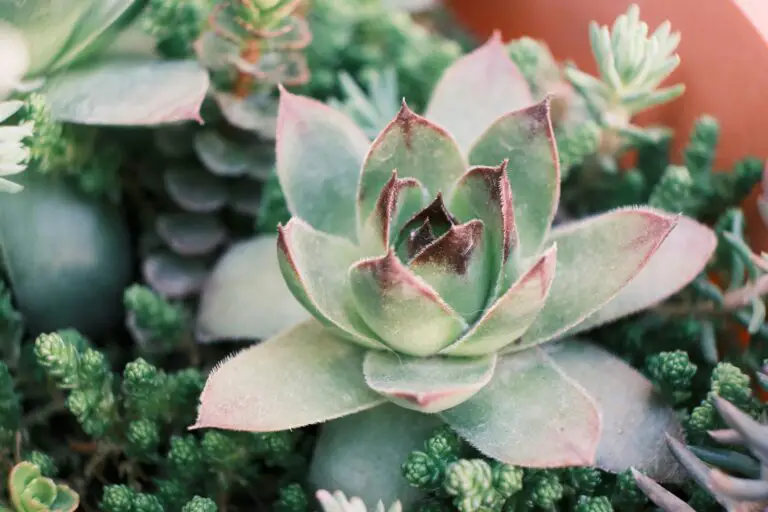
Think of it as a visit to the plant doctor. A professional horticulturist or an experienced nursery staffer can perform the equivalent of a ‘physical’ for your plant, offering a detailed diagnosis, much like a detective unveiling clues at a crime scene. For instance, root rot could be the culprit behind the discoloration, but this is often diagnosed too late by the untrained eye, leading to the untimely demise of your beloved sedum.
Perhaps your neighborhood has recently become the hotspot for an invasive species; a professional can not only identify such unwelcome visitors but also advise on environmentally friendly measures to show them the door. In cases where the issue requires more than just a simple soil amendment or change in watering habits, expert advice is invaluable. A nursery visit can also clue you in on any regional plant diseases currently doing the rounds—knowledge that could save not just one, but all of your garden treasures.
Overall, consulting with a professional becomes essential when your sedum’s yellow flag is waving despite all your best efforts. Not only can experts provide timely intervention, but they also educate on preventative care, which is paramount in ensuring that your garden remains a verdant paradise. So, when in doubt, don’t hesitate to tap into the wisdom of those who’ve made it their life’s work to keep plants like yours thriving. Your sedum—and your peace of mind—will thank you.
Frequently Asked Questions
Is your sedum looking a little less than vibrant? Wondering “why is my sedum turning yellow?” You’re not alone! Sedum enthusiasts often encounter this puzzling scenario. Let’s dig into some of the most common conundrums plant lovers face when their succulent friends start to show those telltale yellow tinges.
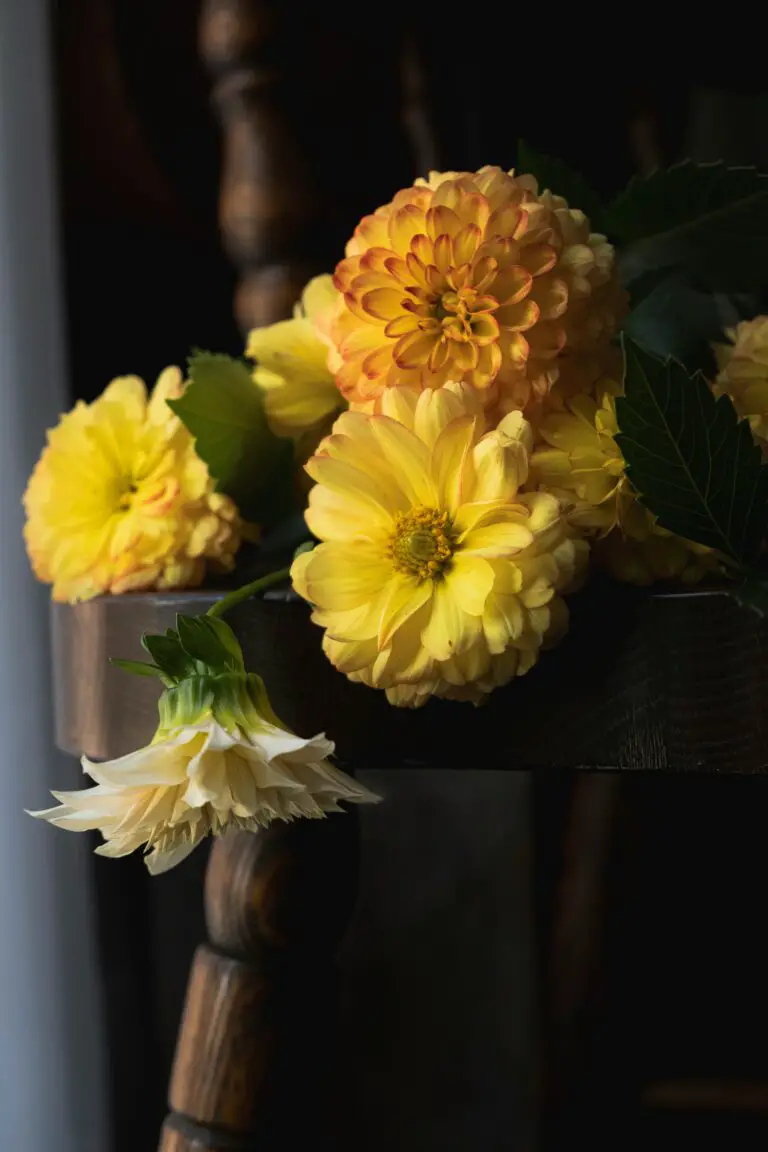
Could Overwatering Be the Culprit?
It’s a sunny Sunday afternoon, and there you are, watering can in hand, giving your sedum its weekly drink. But hold that watering can! Yellowing can often signal that your plant is getting a bit too much H2O. Sedums are drought-resistant, thriving best when the soil is allowed to dry out completely between watering sessions.
Is It Getting Enough Sun, or Perhaps Too Much?
Sunlight and sedum go together like peanut butter and jelly. These sun-worshipping beauties yearn for that bright, golden glow. However, too much sun can cause stress and blanching, turning your sedum’s leaves a yellow hue. Likewise, too little sun can also make them lose their luscious color. It’s all about finding that sweet spot—a nice, sunny spot in the garden or by a well-lit window.
What About Nutrients and Soil Conditions?
Like any good relationship, the one between your sedum and its soil needs to be well-nourished. If the soil is lacking in nutrients, your sedum could send a yellow distress signal. A balanced, slow-release fertilizer made for succulents can help maintain the harmony. The soil should be porous and well-draining to prevent waterlogging, which is a no-go for sedum roots.
Could Bugs or Disease Be Bugging Your Sedum?
Imagine a tiny army of pests feasting on the sap of your beloved sedum—quite a nightmare! Those pesky invaders can cause damage, leading to yellowing leaves. Regular inspections can help catch these critters red-handed. And let’s not forget fungal diseases, often due to damp conditions, which can also encourage yellowing. Act fast with the right treatment, and your sedum might just bounce back.
Remember, your sedum isn’t just a plant—it’s a living barometer for its environment. Paying attention to the signals it sends you is key to keeping it happy and healthy. Now that you’ve got a handle on some of the questions swirling around in your mind, why not go and give your sedum the once-over? With a little detective work and TLC, you and your sedum can live happily ever after in green, vibrant joy.

